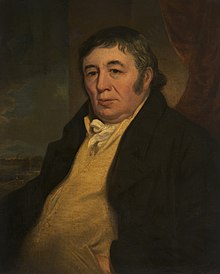| This article needs additional citations for verification. Please help improve this article by adding citations to reliable sources. Unsourced material may be challenged and removed. Find sources: "Rothwell, Hick and Rothwell" – news · newspapers · books · scholar · JSTOR (May 2011) (Learn how and when to remove this message) |
 | |
| Company type | General Partnership |
|---|---|
| Industry | Engineering Heavy industry |
| Predecessor | Smalley, Thwaites & Co. |
| Founded | 1822 |
| Founder | Peter Rothwell |
| Defunct | 1864 |
| Successor | Rothwell, Hick & Co. Rothwell & Co. Bolton Iron and Steel Co. Henry Bessemer & Co. |
| Headquarters | Union Foundry, Black Horse Street, Bolton, United Kingdom of Great Britain and Ireland |
| Key people | Benjamin Hick Peter Rothwell Jr. Benjamin Cubitt |
Rothwell, Hick and Rothwell was an engineering company in Bolton, England. Set up in 1822, the partners became interested in the production of steam locomotives after the Rainhill Trials. The company's first engine was Union, a vertical boiler, 2-2-0 with horizontal cylinders for the Bolton and Leigh Railway of which Hick and Rothwell were promoters and original shareholders, followed by three more locomotives the following year for American railways.
Rothwell and Company
In 1832, Benjamin Hick left to set up his own business, B. Hick and Sons, to be replaced by Benjamin Cubitt, (younger brother of William Cubitt) from Fenton, Murray and Jackson. The firm then became Rothwell and Company. A further order for America was fulfilled in 1833, then for a couple of years the firm was occupied with pumps and stationary engines.
Locomotives, steam engines and cranes
| Peter Rothwell Jr | |
|---|---|
 by Unknown artist by Unknown artist | |
| Born | 1793 |
| Died | 1849 |
| Nationality | British |
| Occupation(s) | Civil and Mechanical engineer |
| Known for | Steam engines Locomotives Art collector |
1820s
About 1827 the company supplied three steam engines to André Koechlin & Cie in France, one for the Mulhouse cotton mill for which Sharp, Roberts and Co. supplied most of the equipment, one for coal mines at Ronchamp, and one for the Bourcart factory. Hick attended at least two of these installations in person during 1827.
A 1:10 scale model of a double jib crane designed by Benjamin Hick is displayed at the Musee des Arts et Metiers.
1830s
From 1836 steam locomotives became their main business. Up to 1840 they produced 56, 28 of which went abroad. Of note is a 4-2-0 for the South Carolina Railroad to the design of Horatio Allen. This had 4-foot-6-inch (1.37 m) drivers, with a swivelling front bogie, and reputed to have worked for 35 years. A deal of sub-contract work came from Edward Bury and Company.
1840s
From 1841, the company began a batch of engines for the broad gauge Great Western Railway. The largest order came in 1847 for 28 2-2-2 engines for the London and South Western Railway.
1850s
Possibly the most remarkable were some 4-2-4 engines for the Bristol and Exeter Railway built in 1853/4 with 9-foot-diameter (2.7 m) unflanged driving wheels, and two ball-and-socket swivelled bogies. They weighed 42 tons and achieved speeds of 82 miles per hour (132 km/h), the fastest engines of the time.
The quality of the company's products brought in repeat orders. Many of the engines were still in service twenty years later. From 1857 the engines were to Alexander Allan's design and were similar to the Old Crewe type. These were sold to the Lancaster and Carlisle Railway and the Eastern Counties Railway.
The last to be built were four broad gauge engines for the Bristol and Exeter Railway and two saddle tanks for the Carmarthen and Cardigan Railway.
Closure
In the face of reduced business and increasing competition, the company closed in 1864. Part of the works was taken over by the Bolton Iron and Steel Company, which was later absorbed by Henry Bessemer and Company in 1906.
See also
- Samuel Crompton
- Robert Daglish Jr. - trained with Hick and Rothwell
- Perseverance (1829) - similar in layout to Union by Rothwell, Hick & Co.
- Pontchartrain Railroad
- List of Saxon locomotives and railcars
- List of Liverpool and Manchester Railway locomotives
- GWR Leo Class
- Abbey Mills Pumping Station
- W & J Galloway & Sons
References
- Marshall, Chapman Frederick (2014). A History of Railway Locomotives down to the End of the Year 1831. Books on Demand. ISBN 9783845712871. Retrieved 4 October 2019.
- Stoskopf, Nicolas (2007). "Extrait del'ouvrage, paru en 2007 sous le titre SACM, quelle belle histoire!. 2007". André Koechlin Cie, SACM, Wärtsilä, histoire de la Fonderie (D'Giesserei) à Mulhouse (1826-2007).
- Chaloner, W.H.; Farnie, D.A.; Henderson, W.O. (2018). "New Light on Richard Roberts, Textile Engineer (1789-1869)". Industry and Innovation: Selected Essays. Routledge. ISBN 978-1351214162.
- "Rothwell". Musee des Arts et Metiers. Musée des arts et métiers / Cnam 2014. Retrieved 4 October 2019.
Title: Crane Inventory no .: 04038-0000- Double Crane, Hick and Rothwell, before 1849 Benjamin Hick, 1790-1842, English civil engineer and mechanic Hick and Rothwell, engineering company in Bolton, England Public works
- "Rothwell, Hick and Rothwell". Grace's Guide. Grace's Guide Ltd. Retrieved 4 October 2019.
- Lowe, J.W., (1989) British Steam Locomotive Builders, Guild Publishing
- Marshall, John (1978). "John and William Hargreaves, Benjamin and John Hick". A Biographical Dictionary of Railway Engineers. pp. 104, 112–3.
External links
- Internet Archive Rothwell, Hick and Rothwell Low Pressure engine, p.741-743